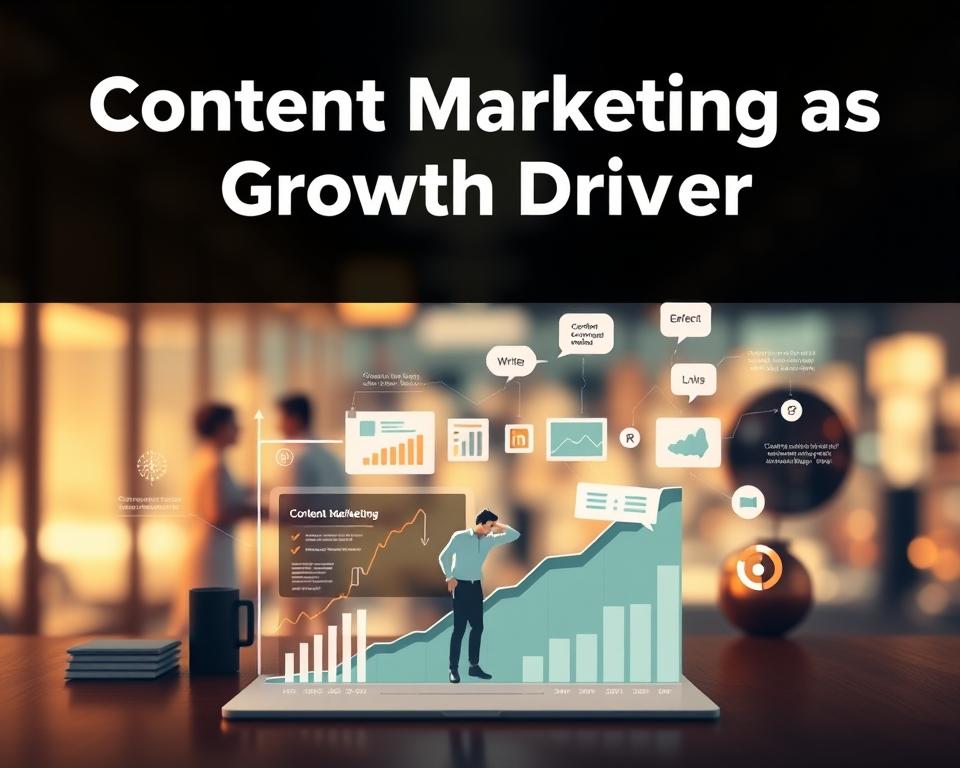Open Accomplishment with Search Engine Optimization Evidence-Based Strategies
Are you aware companies implementing analytical methods are able to scale up to fivefold more rapidly than those that rely on intuition?
In today’s competitive market, recognizing the significance of data-informed SEO tactics is crucial. It’s crucial for successful SEO and boosting natural site visits.
By harnessing diverse forms of data such as customer profiles, web analytics, and competition evaluations, companies can greatly enhance their digital footprint.
“The Digital Marketing Handbook” provides more than 250 pages of actionable advice, currently discounted by 20% using code DIGITALM20. This guide teaches businesses how to optimize their content strategies. It empowers them to track key performance indicators and improve their methods, guaranteeing they both draw in and keep their audience engaged.
Including industry research and up-to-the-minute analytics in your marketing approach gives you a significant competitive edge. The path to better rankings and increased organic traffic starts with dedicating yourself to comprehending and utilizing data efficiently.
Salient Features
- Evidence-based methods improve SEO efforts and elevate online visibility.
- Grasping user characteristics is essential for precise content delivery.
- Leveraging in-depth web analytics might augment engagement with your material.
- Live data monitoring leads to knowledgeable choices and optimized performance.
- Variant testing permits trial and optimization of promotional efforts.
- Frequently reviewing opponents’ publications assists in spotting market tendencies and voids.
- Integrating user opinions guarantees content remains relevant and engaging.
The Importance of Data in SEO
Data serves as the bedrock of successful SEO strategies, influencing many facets of digital marketing.
By understanding user purpose, marketers can develop material that satisfies user queries, boosting engagement and satisfaction. Businesses can use data-driven insights to adjust their methods as search engine algorithms evolve.
Understanding User Intent
Determining user objectives is essential for matching content to audience requirements. When SEO Old Bridge marketers comprehend the intentions behind certain searches, they can create targeted content. This strategy enhances user involvement and non-paid traffic. Metrics from services like Google Analytics offers insights into audience demographics and interests.
Organizations succeed when their content satisfies the core demands of their customers.
Adapting to Search Engine Algorithms
The importance of data-driven insights grows as search engine algorithms change. By analyzing data such as organic traffic and keyword rankings, organizations can modify their methods to remain prominent. An effective keyword plan ensures content aligns with algorithm updates. Site speed and performance are also key, boosting SEO standings and visitor experience.
Being flexible not only enhances current performance but also prepares for future algorithm changes.
Defining SEO Data-Driven Approaches
Data-focused SEO approaches center on leveraging data analysis to improve search rankings and elevate user engagement. Organizations use cutting-edge analysis tools and methodologies to optimize their methods. This ensures a substantial effect on attracting natural visitors and enhancing user satisfaction.
Growing Natural Traffic
Driving organic traffic is crucial for successful SEO efforts. With a majority of internet traffic resulting from unpaid search, companies should concentrate on specific content approaches. Platforms such as Google Keyword Planner and SEMrush provide statistical insights for optimizing keyword selection.
Through emphasizing keyword grouping, professionals are able to comprehend ranking components. This allows for strategic content creation that fits search engine requirements. Such information connects with audiences, boosting SEO standings.
Optimizing for User Experience
Enhancing user satisfaction is vital for keeping users and driving sales. Data reveals that enhanced experiences markedly raise interaction levels and client persistence. Methods like temporal trend analysis help predict future performance trends.
A/B testing also mitigates risks when implementing specific changes. Adopting a data-driven approach leads to strategies tailored to meet user expectations. This creates a more captivating and successful digital footprint.
Search Engine Optimization Analytics-Driven Methods to Enhance Performance
Within the rapidly evolving realm of digital advertising, data-driven strategies are essential for enhancing search engine optimization. These methods seek to improve performance across multiple facets of web presence. They enable companies lead the way amidst intense competition.
Using Keyword Exploration Resources
Search term exploration tools play a key role in detecting shifts and comprehending user motivations. Google Analytics, SEMrush, Ahrefs tool give significant data on keyword standings and unpaid visitor flow. They also reveal user search behavior.
Organizations recognize the value of using these tools to enhance their material. This guarantees enhanced online presence. Using up-to-date information, organizations can rapidly alter their tactics. They improve their content to match what users are looking for.
As search engine optimization changes, forecasting methods based on historical data help marketers anticipate trends. This positions them in front in the game.
Implementing A/B Testing for Content
Comparative testing is a powerful tool to assess different content versions. It enables marketing professionals to test various titles, layouts, or CTA messages. This reveals which components increase interaction and lead generation.
This evidence-backed strategy promotes relentless content improvement. It ensures that content appeals to the specific demographic. Examining split test outcomes generates iterative insights toward perpetual enhancement.
Marketers can refine their plans relying on comprehensive engagement statistics. This enhances overall site performance. It stays abreast of shifting consumer interests.
Leveraging Web Analytics
Site performance metrics serve as an essential resource in enhancing search optimization plans and online effectiveness. They help track essential optimization indicators, providing understanding of audience involvement. This data guides businesses in strategic planning, leading to improved outcomes.
Tracking Key SEO Metrics
For any online business, tracking vital SEO data is key. Tools such as Google Analytics provide valuable data on multiple success metrics. This encompasses:
- Natural search traffic
- Keyword rankings
- CTR
- Bounce rates
Such data reveal user interaction patterns, helping marketers gauge content effectiveness. Through examining data such as dwell time and page hits, organizations better comprehend the behavior of their visitors.
Understanding Visitor Origins
Understanding distinct traffic channels is crucial for enhancing digital approaches. Google’s analytic tool divides visitor data into different sections:
| Visitor Source | Explanation |
|---|---|
| Unpaid Search | Traffic from search engine queries |
| Direct | Visitors entering the URL manually |
| Referral | Traffic from links on other websites |
| Social | Visitors from social networks |
Comprehending these traffic channels is crucial for enhancing search optimization plans. This aids companies in better resource distribution. Metric evaluations uncover which avenues lead to significant audience involvement. Such understanding directs focus to improve these channels for improved performance.
The Role of On-Page Optimization in SEO
On-page optimization plays a vital role in SEO. It involves aspects like page titles and meta descriptions, that affect search positions and audience interaction. Developing strong title tags and brief meta descriptions can draw users in, enhancing clicks and overall traffic.
Value in Page Titles and Meta Summaries
Page titles are optimal at 50-60 characters. Such length maximizes appearance in search results. Meta descriptions, close to 120 characters, should concisely highlight the page’s value. Incorporating focus keywords into these sections helps Google understand the page’s relevance, improving its search position possibilities.
Crafting Pertinent and Compelling Material
Developing material that is pertinent and captivating is vital. It minimizes bounce rates and guarantees users promptly find desired content. Thoughtful incorporation of keywords improves SEO results. Over half of SEO experts consider on-page SEO most effective. Adding internal links improves site structure and navigation, improving visitor satisfaction.
| On-Site Optimization Component | Optimal Range / Statistic |
|---|---|
| Title Tag Length | 50 to 60 characters |
| Meta Summary Size | Around 120 characters |
| CTR for First Organic Listing | Approximately 33% |
| Traffic Boost Post-Optimization | As much as 40% |
| On-Page SEO Factors Affecting Rankings | 40% |
| Typical Duration for Pre-Publish Optimization | Approximately 2 to 3 hours |
Establishing Credibility through Off-Site Strategies
External SEO is crucial for boosting a website’s authority and visibility on SERPs. Inbound links, references from authoritative sources, are significant. They have a major influence on site authority and rankings. Businesses aiming to enhance their online presence need to concentrate on securing reputable backlinks from credible sources.
Value of Inbound Links
Inbound links act as endorsements, signaling content value and relevance to search engines. Having varied and reputable inbound links is linked to higher search rankings. According to Moz, the count of unique linking domains is vital for better rankings. High-quality backlinks originate from related websites, underscoring the value of link quality.
Strategies for acquiring backlinks are:
- Sharing unique, data-driven content
- Guest posting on respected industry websites
- Collaborating with key industry figures
- Developing high-quality assets for natural linking
Promoting Social Media Engagement
Participation in social networks strengthens off-site optimization by increasing visibility and reputation. While social signals don’t directly influence rankings, they influence brand visibility and user participation. Effective engagement on social media platforms allows organizations to connect with more users, cultivating credibility and connections.
For optimal interaction on social platforms, adopt these methods:
- Communicate frequently with users to foster loyalty
- Work with influential individuals relevant to your market
- Share informative content that encourages audience sharing and discussions
- Monitor interaction data to refine approaches
Overseeing and cultivating social engagements is crucial for enhancing brand reputation. A strong digital footprint enhances off-page optimization effectiveness, culminating in better search positions due to greater credibility.
Performing an Search Optimization Assessment
For companies aiming to enhance their digital footprint, conducting an SEO assessment is essential. It serves as a comprehensive analysis that highlights your website’s strengths and weaknesses. By reviewing technical elements, page content, external links, and user interactions, you gain a full understanding of your current strategy. This audit reveals opportunities for improvement, directing you to more effective optimization plans.
Defining targets is essential in the assessment process. Employing SMART objectives (specific, measurable, achievable, relevant, time-based) promotes an effective analysis. Platforms such as Google Analytics provide insights into your audience, with SEMrush or Ahrefs providing extensive keyword and rivalry insights. Screaming Frog SEO Spider is invaluable for technical assessments. Such resources aid in developing goal-aligned strategies.
Enhancing website access, speed, and material value is crucial for higher search positions. A thorough check of on-page elements, such as meta tags, internal links, and keyword optimization, is essential. This works alongside assessing inbound links and social cues, boosting your off-page SEO. Regular SEO audits enhance your site’s visibility helping you stay competitive in the changing digital arena.



